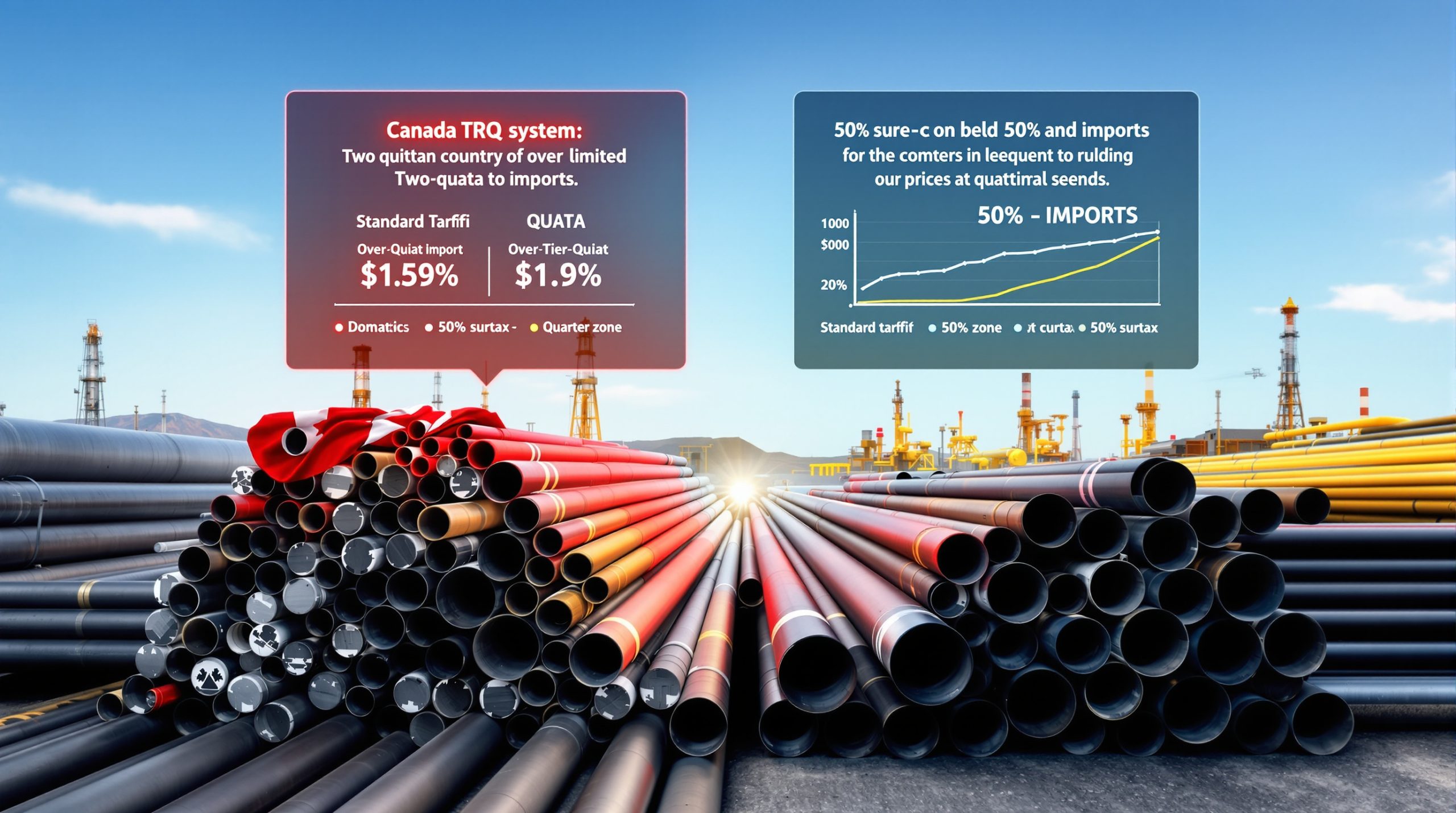Indonesian Nickel Market Weekly Review: Supply-Demand Dynamics and Price Trends
In the dynamic landscape of Indonesia's nickel industry, recent developments signal significant shifts in market fundamentals. With production quotas substantially exceeding actual capacity and seasonal factors temporarily constraining supply, stakeholders face a complex operating environment. This comprehensive analysis explores current price trends, weather impacts, NPI market dynamics, downstream responses, and forecasts for this critical mineral sector.
What's Happening in Indonesia's Nickel Ore Market?
The Indonesian nickel sector is navigating a precarious balance between government-approved production quotas and actual market demand, creating both challenges and opportunities for industry participants.
RKAB Quota Approval Creates Supply Pressure
The Indonesian government has approved a Work Plan and Budget (RKAB) quota of 364 million tons for nickel ore in 2025, as confirmed by Meidy Katrin Lengkey, Secretary-General of the Indonesian Nickel Miners Association (APNI). This figure dramatically exceeds the actual production capacity of 120 million tons, creating a theoretical oversupply of 203%.
"The disparity between approved quotas and actual production capacity creates significant market uncertainty," notes Lengkey, whose assessment was reported by CNBC Indonesia and cited in the latest SMM analysis.
This substantial quota approval signals potential oversupply concerns in the coming months, despite current supply constraints from seasonal factors. The government's approach appears to prioritize maximum flexibility for producers rather than aligning with realistic production forecasts.
Current Price Trends for Different Ore Types
Pyrometallurgical ore prices have weakened noticeably in recent trading sessions. Domestic Indonesian laterite nickel ore (1.6%) prices have dropped by 0.5% week-over-week to USD 50.4-53.9 per wet ton. This price erosion reflects both immediate market sentiment and longer-term concerns about quota-driven oversupply.
Meanwhile, hydrometallurgical ore prices have demonstrated greater resilience. Domestic Indonesian laterite nickel ore (1.3%) has maintained stability at USD 26-28 per wet ton. This price differential between ore types highlights the impact of end-use applications on market dynamics, with hydrometallurgical ore benefiting from sustained demand from HPAL (High-Pressure Acid Leaching) projects targeting the electric vehicle battery supply chain.
Premium Rates and Regional Variations
Premium rates for Indonesian laterite nickel ore have stabilized in the USD 24-26 per wet ton range, reflecting a temporary equilibrium in the market despite underlying supply-demand imbalances. This stability contrasts with the downward pressure seen in the broader nickel market.
Regional variations in premium structures reflect logistical considerations, with miners closer to major processing hubs commanding slightly different premiums than those in more remote locations. This geographical premium differential has remained relatively constant despite market volatility in underlying price benchmarks.
How Are Weather Conditions Affecting Nickel Supply?
Indonesia's tropical climate plays a crucial role in the short-term supply dynamics of nickel ore, creating seasonal production patterns that partially offset structural oversupply concerns.
Rainy Season Impact on Mining Operations
The current rainy season in Indonesia continues to constrain immediate nickel ore supply, creating a temporary buffer against the potential oversupply indicated by the large RKAB quota. Increased precipitation significantly impairs both extraction activities and transportation logistics, with road transport efficiency typically declining by 40% or more during peak rainy periods.
Mining operations face multiple weather-related challenges:
- Reduced accessibility to active mining faces
- Increased water management requirements
- Higher moisture content in extracted ore
- Compromised road conditions for ore transport
- Extended drying times before shipment
These operational constraints have helped prevent prices from declining more dramatically in the short term, particularly for higher-grade pyrometallurgical ore where immediate supply tightness is most pronounced.
Seasonal Production Patterns and Forecasts
Historical data suggests that production typically increases following the rainy season, which could further pressure prices once weather conditions improve. Analysis of five-year production patterns reveals consistent seasonal variations, with output typically rising 30-45% during dry season months compared to wet season production rates.
Market participants should anticipate increased supply availability in the coming months as seasonal constraints ease. This production surge, combined with the exceptionally large RKAB quota, may create renewed downward pressure on ore prices as Q3 progresses into Q4.
"Weather patterns create a predictable rhythm to Indonesian nickel supply that temporarily masks the structural oversupply problem. Once dry conditions return, we'll likely see the full impact of the quota-demand imbalance," notes SMM's market analysis team.
What's Driving the NPI Market Dynamics?
Nickel Pig Iron (NPI) producers face mounting challenges as input costs from previous purchasing periods collide with declining output prices, creating significant margin compression.
Price Trends and Production Costs
High-grade ferronickel prices continued their downward trend this week, with the average price dropping to 905.3 yuan/nickel point (ex-works, including tax), a decrease of 4.5 yuan/nickel point from the previous week. Similarly, the FOB Indonesia NPI index price fell by $0.5 to $110.4 USD/nickel point, reflecting persistent market weakness.
This price deterioration compounds the challenges for producers, who typically face a 25-day lag between ore procurement and finished NPI production. With ore constituting approximately 65-70% of total NPI cash costs, this lag creates significant cost inversion when market prices decline rapidly.
Profitability Challenges for Smelters
Most nickel smelters in Indonesia are currently operating at a loss, with cost inversions deepening this week based on nickel uses & properties from 25 days ago. This financial pressure has led some facilities to reduce production loads, while others have pivoted to producing high-grade nickel matte instead of NPI.
The cost structure analysis reveals:
- Ore costs (25-day lagged): Major component, trending unfavorably
- Power costs: Relatively stable but significant component
- Labor costs: Minor component with minimal fluctuation
- Auxiliary materials: Stabilizing at low levels
The combined effect has pushed numerous operations below breakeven, with smaller producers particularly vulnerable to extended periods of negative margins.
Production Adjustments and Output Forecasts
The ongoing profitability challenges have prompted strategic production adjustments across the Indonesian nickel industry. Some convertible production lines have shifted to high-grade nickel matte production, potentially reducing Indonesian NPI output in the near term and creating a slight supply-side correction.
Production flexibility varies significantly by facility:
- Modern integrated operations: Greater ability to pivot between products
- Older dedicated NPI facilities: Limited options beyond reducing utilization rates
- RKEF lines with matte capability: Increasing focus on battery materials
These adjustments may create a more balanced market in coming months, particularly if auxiliary material prices recover as expected under new policy measures.
How Is the Downstream Sector Responding?
Stainless steel producers, the primary consumers of NPI, are demonstrating cautious purchasing behavior while maintaining low inventory levels, creating additional uncertainty for upstream nickel suppliers.
Stainless Steel Market Conditions
Stainless steel prices have shown signs of stabilization this week, with futures markets experiencing a modest rebound. However, spot prices remain at low levels, limiting the upward momentum for raw material prices including nickel.
The stainless steel sector faces multiple challenges:
- High inventory levels throughout the supply chain
- Compressed margins limiting production enthusiasm
- Weak end-user demand in key consumption sectors
- Competition from scrap-based production routes
These factors collectively contribute to the cautious approach of steel producers regarding raw material procurement, creating additional pressure on NPI and nickel ore prices.
Purchasing Behavior of Steel Mills
Stainless steel producers are primarily purchasing based on immediate needs rather than building inventory, indicating cautious market sentiment. Procurement prices have declined compared to previous periods, reflecting the downstream pressure on the nickel value chain.
Mills are demonstrating several behavioral shifts:
- Shorter procurement cycles with reduced volume per order
- More aggressive price negotiation tactics
- Increased focus on quality premiums and delivery reliability
- Greater willingness to switch between suppliers based on price
This cautious approach reflects concerns about potential further commodity price impact and generally weak downstream demand in key stainless steel consuming sectors.
Cost Structure Analysis
The cost structure for nickel producers shows some potential relief, with auxiliary material prices stabilizing and potentially recovering under policy interventions. Refractory materials, electrodes, and other inputs have reached price levels that industry participants consider unsustainably low, prompting government intervention through "anti-involution" policies.
However, the ongoing weakness in nickel ore prices may shift the smelters' ore cost line downward, partially offsetting these gains. This complex interplay between various cost components creates a challenging environment for forecasting producer margins and price trends.
What Are the Market Outlook and Forecasts?
The Indonesian nickel market faces continued challenges in the near term, with supply-demand imbalances likely to persist despite some potential relief from policy measures and production adjustments.
Short-Term Price Projections
In the short term, high-grade ferronickel prices are expected to remain weak but stable, with limited downside potential due to already compressed margins for producers. Current price levels are approaching production costs for even the most efficient operations, creating natural resistance to further declines.
Pyrometallurgical ore prices are projected to remain under pressure, with the large RKAB quota creating a persistent overhang despite seasonal supply constraints. Once weather conditions improve, renewed downward pressure is likely unless significant production discipline emerges.
Hydrometallurgical ore may face increasing downward pressure as supplementary RKAB quotas are approved, typically occurring in August-September. However, sustained demand from HPAL projects may provide more support than for pyrometallurgical grades.
Supply-Demand Balance Expectations
The overall nickel market is expected to remain in an oversupply situation, with the gap between approved production quotas and actual demand continuing to weigh on prices. This imbalance is likely to persist until significant production cuts or demand increases materialize.
Potential supply adjustments include:
- Reduced utilization rates at high-cost NPI operations
- Further conversion of capacity to nickel matte production
- Delayed ramp-up of new projects
- Possible government intervention to align production with demand
Demand factors that could improve the balance include:
- Recovery in stainless steel consumption
- Accelerated growth in battery sector nickel demand
- Inventory rebuilding if prices stabilize
Policy Influence on Market Recovery
Recent "anti-involution" policy interventions may support a recovery in auxiliary material prices, potentially easing some pressure on smelter profitability. These policies aim to prevent excessive competition and price deterioration in the industry by establishing minimum price levels for key inputs and potentially restricting output from the highest-cost producers.
The effectiveness of these measures remains uncertain, but historical precedent suggests that well-implemented industrial policies can significantly influence market dynamics in the Indonesian context. The timing and scope of implementation will be critical factors to monitor in the coming weeks.
FAQ: Indonesian Nickel Market
What is the RKAB quota and why is it significant?
The RKAB (Work Plan and Budget) quota represents the government-approved production allowance for mining companies. The 2025 quota of 364 million tons significantly exceeds actual production capacity of 120 million tons, creating potential oversupply concerns while signaling the government's support for continued industry expansion.
This quota system serves multiple purposes:
- Establishing maximum allowed production volumes
- Creating a framework for royalty and tax collection
- Enabling resource management and conservation
- Supporting broader industrial development goals
While actual production rarely reaches quota levels, the significant gap creates market uncertainty and potential price pressure.
How does the rainy season affect nickel production in Indonesia?
The rainy season hampers mining operations by making ore extraction and transportation more difficult, temporarily constraining supply. This seasonal factor helps balance the market in the short term but creates production volatility throughout the year.
Typical impacts include:
- Reduced mining activity in open-pit operations
- Increased moisture content requiring additional processing
- Transportation difficulties on unpaved mining roads
- Loading and unloading delays at ports and stockyards
- Higher operational costs during wet periods
These factors collectively reduce effective supply during rainy months, creating temporary price support that typically dissipates once dry conditions return.
What is the difference between pyrometallurgical and hydrometallurgical ore?
Pyrometallurgical ore (typically higher grade at around 1.6% nickel content) is used in traditional smelting processes, while hydrometallurgical ore (around 1.3% nickel content) is processed using chemical leaching methods. Each supports different downstream production processes and end products in the nickel value chain.
Key distinctions include:
- Pyrometallurgical processing: Uses heat-based reduction in electric furnaces
- Hydrometallurgical processing: Uses acid leaching (typically HPAL technology)
- End products: NPI/ferronickel vs. mixed hydroxide precipitate (MHP)/sulfate
- End uses: Primarily stainless steel vs. primarily EV batteries
- Cost structure: Higher energy costs vs. higher chemical reagent costs
These differences create distinct market dynamics for each ore type, with hydrometallurgical ore currently showing greater price stability due to its link to the growing battery sector.
Why are Indonesian nickel smelters operating at a loss?
Smelters are experiencing cost inversions due to the combination of high raw material costs from previous purchasing periods and declining output prices. This squeeze on margins has forced production adjustments and operational changes throughout the industry.
Contributing factors include:
- 25-day lag between ore purchase and NPI production
- Declining NPI prices due to oversupply concerns
- Compressed margins in the stainless steel sector
- Rising operational costs for some inputs
- Structural overcapacity in the Indonesian NPI sector
Smelters with integrated mining operations or those who have successfully pivoted to nickel matte production generally face less severe margin compression than standalone NPI producers.
Table: Indonesian Nickel Market Price Summary (July 2025)
| Product | Current Price | Weekly Change | % Change |
|---|---|---|---|
| Indonesian Laterite Nickel Ore (1.6%) | USD 50.4-53.9/wet ton | -USD 0.25 | -0.5% |
| Indonesian Laterite Nickel Ore (1.3%) | USD 26-28/wet ton | No change | 0% |
| High-Grade Ferronickel (8-12%) | 905.3 yuan/nickel point | -4.5 yuan | -0.5% |
| FOB Indonesia NPI | USD 110.4/nickel point | -USD 0.5 | -0.45% |
Key Market Indicators to Watch
Production Metrics
- Actual production volumes versus RKAB quotas
- Capacity utilization rates at major smelters
- Shifts in production from NPI to nickel matte
The divergence between approved quotas and actual production provides insights into market discipline and potential future supply. Current reports indicate production running at approximately 33% of approved quota levels, creating significant theoretical oversupply risk if utilization increases.
Capacity shifts between NPI and matte production represent a critical balancing mechanism, with each 1% shift from NPI to matte potentially removing approximately 15,000-20,000 tons of nickel units from the stainless steel supply chain annually.
Demand Signals
- Stainless steel production rates and inventory levels
- Electric vehicle battery production trends
- Global economic indicators affecting industrial metal demand
Stainless steel production, particularly in China, remains the dominant demand driver for Indonesian nickel. Current production rates show signs of stabilization but remain below previous peaks, creating persistent demand weakness.
Battery sector growth continues to support hydrometallurgical ore demand, with Indonesian HPAL projects progressively increasing their share of global battery-grade nickel supply. This sector is expected to provide increasingly significant demand support in coming years.
Policy Developments
- Implementation of "anti-involution" measures
- Export regulations and domestic processing requirements
- Environmental compliance requirements and enforcement
Recent policy developments focus on preventing destructive competition while maintaining Indonesia's export orientation in value-added nickel products. The "anti-involution" concept represents an attempt to ensure sustainable industry consolidation trends while preserving Indonesia's competitive position in global markets.
Export policies continue to emphasize domestic processing, with ongoing restrictions on unprocessed ore exports serving as the foundation of Indonesia's downstream development strategy. This approach has successfully shifted the country from an ore exporter to a major producer of intermediate and refined nickel products.
Further Exploration
Readers interested in learning more about the Indonesian nickel market can also explore related educational content, such as the weekly market analysis published by AgMetalMiner on their website.
For investors and industry participants seeking deeper insights into cost structures, production technologies, and market dynamics, specialized reports from organizations such as CRU, Wood Mackenzie, and INSG provide valuable perspectives on this rapidly evolving sector.
Understanding Indonesia's position in the global nickel value chain requires monitoring both traditional stainless steel demand drivers and emerging battery sector requirements, as these parallel markets increasingly influence the country's production decisions and mining industry trends. The [
Ready to Stay Ahead of the Next Big Mineral Discovery?
Discover significant ASX mineral opportunities before the market does with Discovery Alert's proprietary Discovery IQ model, turning complex data into actionable insights for traders and investors. Visit the Discovery Alert discoveries page to explore how historic mineral discoveries have delivered substantial returns and start your 30-day free trial today.




